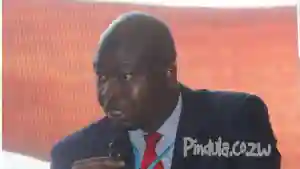A senior government official said that businesses should not use the parallel market exchange rate as a reference for pricing in the economy as it constitutes only a small fraction of cumulative trade volumes.
The Zimbabwe dollar is currently trading above $1 000 per US$1 on the parallel market, while the official rate is US$1:$779.
Businesses have been accused of indexing prices to the parallel market which, in turn, has fuelled runaway inflation.
Ministry of Finance and Economic Development Permanent Secretary George Guvamatanga said that the parallel market accounted for less than 10 percent of foreign currency traded in the economy last year. He said:
I have indicated that the percentage of the black market (to total forex traded) is less than 10 percent.
If you look at the inflows that came in the Reserve Bank (of Zimbabwe) reports, of US$12 billion traded, maybe only US$1 billion was traded on the parallel market.
All the other funds are traded through FCAs, auction, and willing-buyer, willing-seller systems.
So, why are we keen to use parallel exchange rate marginal pricing, even if someone comes to you with the argument that they are not getting forex from the auction?
You know what? We want to give so much credit to this parallel market, but when you actually look at it, this parallel market only accounts for about 10 percent of the total foreign currency traded in the economy. The bulk of it comes from the auction, interbank and FCAs.
It (parallel market) then becomes the anchor (of pricing), which is a theorem of marginal pricing because even if you take the 10 percent and do weighted price, the rate is still probably around $840:US$1.
Guvamatanga said foreign currency inflows have been rising and under normal circumstances, this should keep the forex rate stable. | The Sunday Mail

